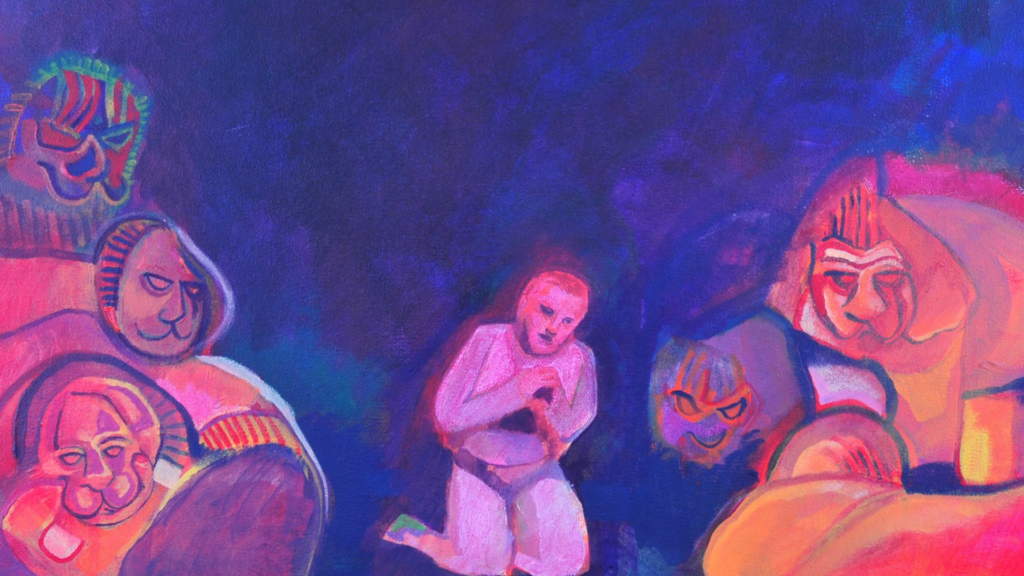Helpful language tools and guidance for discussing mental health concerns with youth.
Part of the Well Beings Mental Health Language Guide.
The purpose of this guide is to address stigma around mental illness and equip users with person-first language tools for discussing mental health concerns with youth. To operationalize the term, we define youth as ages 14-22 years old. In creating this guide, we hope to empower all individuals, regardless of their experience, to have meaningful conversations with young people about their mental health and lived experiences. Through these conversations, we may save lives.

Why Language Matters
We strongly believe that words have power. Language plays an important role in helping fight stigma, or unknowingly reinforcing it, so we must do all that we can to destigmatize and support those with mental health concerns.
What Is Mental Health?
Mental health describes the state of a person’s emotional and psychological well-being. This includes one’s ability to cope with everyday stresses and working productively. When discussing mental health, it is important to note that there are no absolutes. Mental health exists on a spectrum.
Person-First Recovery Model (1,2,3)
A person is more than their health condition. When speaking to (or about) someone living with a mental health condition, use person-first language that focuses on the individual, not the illness.
Person-First Phrases | Similar to All Health Conditions |
“they/she/he have schizophrenia | “they/she/he has high blood pressure” |
“they/she/he live(s) with depression” | “they/she/he live(s) with diabetes” |
“they/she/he are recovering from [substance] use disorder” | “they/she/he are recovering from a broken leg” |
“they/she/he has lived experience with depression” | “they/she/he has lived experience with loss of vision” |
Person-first language is essential to the recovery-oriented model, which sees the individual as having a central role in defining and developing treatment for their condition. It is founded on the belief that people are the best experts of themselves. We invite you to take this language further by calling people “community members” as everyone is a member of a community.
What Is the Recovery Model?
A diagnosis does not define a person’s identity, but when people are labeled by their condition it is easy to focus more on the illness than the individual. Much of how mental health is commonly discussed is based on the traditional medical model which focuses on addressing physical symptoms of mental illness. Today, the patient-centered recovery model is a main framework through which people understand and treat mental illness.
Some of the differences…
Medical Model | Recovery Model |
Focus has traditionally been on illness | Focus is on the person, or What Happened/Is Happening to You? |
Focus is on the treatment of the illness | Focus is on individual healing and transformation |
Medical provider is in charge and holds the knowledge | Individual is the expert on themselves; shared decision making with others who hold other knowledge |
Mental health, just like physical health, exists on a spectrum. Health is not static, and when talking about someone’s mental health, language should reflect that a person’s mental health condition is not fixed. Some people have chronic illnesses, while others deal with symptoms that can fluctuate in severity over any period of time due to “temporary or situational circumstances.” It is important to use language that contextualizes illness.
Setting the Right Environment
Our casual conversations in front of and with youth can impact whether they might feel comfortable talking with an adult when a mental health concern might arise. Within today’s culture, we use mental health diagnostic terms to describe things that happen in everyday life, from describing the weather as “bipolar” or casually mentioning that some event in life makes one want to “shoot” themself. These may seem like harmless ways to communicate what is happening in our lives, but the intent does not always match the true impact of the words. In creating an environment where youth feel comfortable talking about their mental health concerns, we must make a commitment to use more appropriate language to describe situations and remove diagnoses as descriptive terms.
Old Phrase | New Phrase |
The weather is so “bipolar” | This weather is so “unpredictable” |
That assignment was “depressing” | That assignment was “stressful” |
That’s “crazy” / ” insane” / ”mad” / ”nuts” | That’s “unimaginable”, “out-there”, “hectic” |
I’m so “addicted” | I’m very “invested” |
I’m so “OCD” | I’m so “particular” |
“I just want to blow my brains out.” | Note: When you hear statements like this, treat them seriously. |
The man committed suicide | The man died by suicide |
Discussing Youth Mental Health Concerns
When talking through mental health concerns with youth, it is important to note that the goal is to ensure that they feel loved, respected, heard, and seen. There are many contributing factors to youth mental health that include, but are not limited to:
- Depression
- Anxiety
- Gender identity
- Sexual orientation
- Race
- Housing insecurity
- Food insecurity
- Body image
- Bullying
In order to begin the conversation surrounding these topics, adults must acknowledge their own biases and cast them aside for the sake of the younger individual(s). Remember, the goal is to provide a safe space for young people to share their truths. This may, at times, mean understanding that the youth’s own biases can influence their willingness to speak freely with you. Give yourself grace and do not take it personally. Youth, just like adults, have lived experiences that shape the way in which they view the world. In these instances, you may ask if they would like to be connected with someone else.
- Mental Health Assoc. Of San Francisco Training Guide
- https://www.samhsa.gov/find-help/recovery
- American Public Media Call to Mind Style Guide